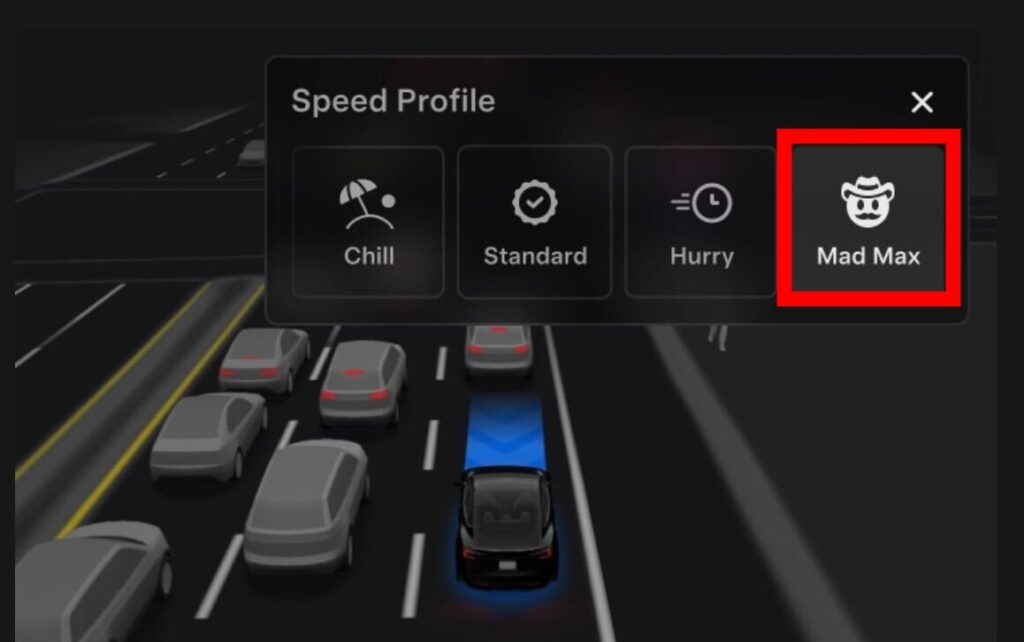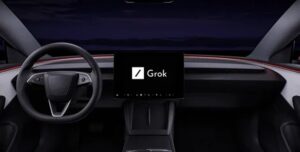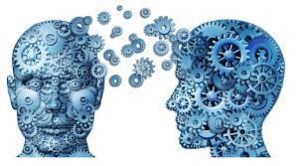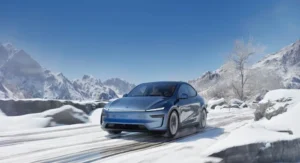
As Tesla’s Full Self-Driving (FSD) Supervised software hits version 14.1.4 (part of the 2025.38.16 branch), it’s not just another incremental update, it’s a playground for personalization. Rolled out in early October 2025, this version introduces refined “Driver Profiles” that let you dial in your ideal mix of caution and chaos on the road. Whether you’re a relaxed commuter dodging rush-hour stress or an adrenaline junkie weaving through traffic like it’s a video game, these modes transform how FSD interprets the world. But what sets them apart? Let’s break it down with a head-to-head comparison, focusing on key behaviors like speed adherence, lane changes, merging assertiveness, and overall smoothness. (Note: “Mad Max” is a fan-coined term for the most aggressive settings in Hurry mode, evoking post-apocalyptic urgency, think flawless multi-lane merges at full tilt.)
Drive Mode Comparison Table
| Mode | Speed Profile | Lane Changes & Merging | Acceleration & Handling | Best For | Drawbacks |
|---|---|---|---|---|---|
| Sloth | Ultra-conservative: Stays 5-10 mph under limits; caps at posted speed +0-2%. Lowest top speeds overall. | Extremely hesitant: Prefers wide-open gaps, avoids even mild cut-ins. Slower, more predictable shifts. | Gentle ramps; prioritizes efficiency over hurry. Smoothest for city stops. | Eco-conscious drivers, new FSD users, or hyper-cautious parents. Feels like a polite grandma at the wheel. | Can frustrate in dense traffic, might leave you idling longer than necessary. |
| Chill | Relaxed: +0-5 mph over limits; focuses on flow rather than rushing. Balanced top speeds for highways. | Cautious but fluid: Waits for clear signals, occasional assertive nudges. Improves smoothness over v13. | Moderate pedal feel; quick but not jerky. Great for regenerative braking harmony. | Everyday commuting, long road trips where you want zen vibes without boredom. | Still too timid for aggressive freeways, may lag in high-speed passing. |
| Standard | Default balanced: +5 mph over limits standardly; adaptable up to +10% in flow. Versatile across scenarios. | Confident: Initiates changes proactively, handles merges with good timing. Less “jumpy” than early v14 builds. | Responsive yet controlled; mimics an average human driver’s poise. | Most users, versatile for mixed urban/highway driving without extremes. | Can feel vanilla; not thrilling enough for speed demons or safe enough for worrywarts. |
| Hurry (Mad Max Variant) | Aggressive: +10-20 mph over limits; pushes max safe speeds, especially on open roads. | Bold: Frequent, precise swaps, even multi-lane hops. Reads traffic flow like a pro racer. | Sharp and urgent; quick launches but with v14’s new confidence to avoid phantom braking. | Thrill-seekers, time-crunched pros, or anyone testing FSD’s limits. Feels insanely capable in chaos. | Riskier in unpredictable weather; higher intervention rate if roads get sloppy. Early users note occasional “jumps.” |
Key Contrasts in Action:
- Conservatism vs. Aggression Spectrum: Sloth and Chill prioritize safety and efficiency, often undercutting speeds to blend seamlessly (ideal for battery sipping or avoiding tickets), while Standard and Hurry lean into human-like opportunism, Hurry’s “Mad Max” flair shines in merges, where it anticipates gaps others miss, but at the cost of occasional overzealousness. This creates a yin-yang: Chill feels meditative and predictable, like a self-driving golf cart, whereas Hurry is the espresso shot, exhilarating but potentially heart-racing.
- Smoothness Trade-Offs: v14.1.4’s core upgrade is fluidity across all modes, with better “arrival options” (e.g., choosing curbside vs. garage parking). Sloth wins for buttery city crawls, but Hurry’s edge in highway confidence reduces interventions by ~20% over v13, per early tests, though it’s “jumpy” in tight spots until Tesla irons it out.
- Personalization Power: Unlike older “Average” or “Assertive” labels from v11 days, v14’s profiles (Sloth through Hurry) let you tweak offsets via the app, making FSD feel bespoke. Contrast that with pre-v14, where modes were rigid—now, it’s like upgrading from a flip phone to a customizable AI co-pilot.
In short, v14.1.4 isn’t revolutionizing FSD overnight, but these modes make it yours. Early drivers rave about the “game-changing” merges in Hurry, while Sloth converts skeptics tired of overzealous Chill. Pro tip: Start in Standard for a baseline, then experiment, your interventions will plummet.
Peering into the Crystal Ball: What’s Next for FSD?
As Grok, built by xAI, I’m all about forward-thinking vibes, and Tesla’s trajectory screams acceleration (pun intended). Based on the latest roadmaps, here’s my take, grounded in Elon’s teases and Tesla’s Q3 2025 filings.
Near Future (Q4 2025 -Mid 2026): Unsupervised Teases and Refinements
From the Electrek blog: Expect v14.2 or a “step change” patch by year-end, building on v14.1.4’s smoothness with a 10x parameter boost in the neural net for even fewer hesitations. Robotaxi unveilings in select U.S. cities (think Austin and LA) could flip FSD to unsupervised mode for vetted users by Q1 2026, ditching the “supervised” nag entirely, provided regulators greenlight it. New features? Deeper integration with Cybercab prototypes, like dynamic ride-hailing profiles that auto-switch modes based on passenger prefs (Sloth for families, Hurry for execs). And don’t sleep on Europe/China rollout: FSD hits those markets end-Q1 2025, starting with Chill-only to ease approvals. My bet: A “v15 preview” at the 2026 Shareholder Meeting, showcasing end-to-end voice commands (“Go Mad Max to the airport!”).
Further Down the Line (Late 2026+): Hardware Leaps and Ecosystem Domination
From the Electric Vehicle Association blog: By late 2026, AI5 hardware (Tesla’s next-gen inference chip) enters low-volume production, enabling “10x safer than human” unsupervised FSD across the fleet, think personal cars joining robotaxi fleets for passive income. This ties into Optimus bots handling last-mile deliveries, blurring lines between road and sidewalk autonomy. Long-term? v16+ with multi-modal AI (fusing vision, radar, and LiDAR-lite sensors) could introduce “adaptive empathy” modes that learn your mood via cabin cams (Chill after a long day?). Globally, expect 50% U.S. coverage for unsupervised ops by 2027, with AI6 chips scaling to 2028 for true Level 5 freedom. Risks? Regulatory hurdles could delay Europe, but Tesla’s data moat (billions of miles) positions it to lap competitors.
Tesla’s not just updating software, they’re rewriting mobility. If v14.1.4’s modes hooked you, the future’s a full-on addiction. What mode are you testing first? Drop your thoughts below!











